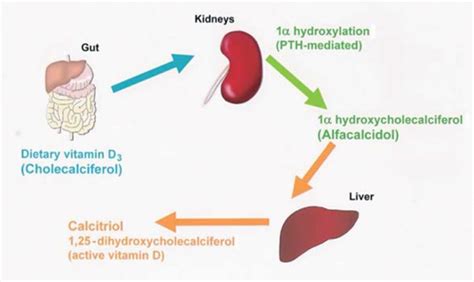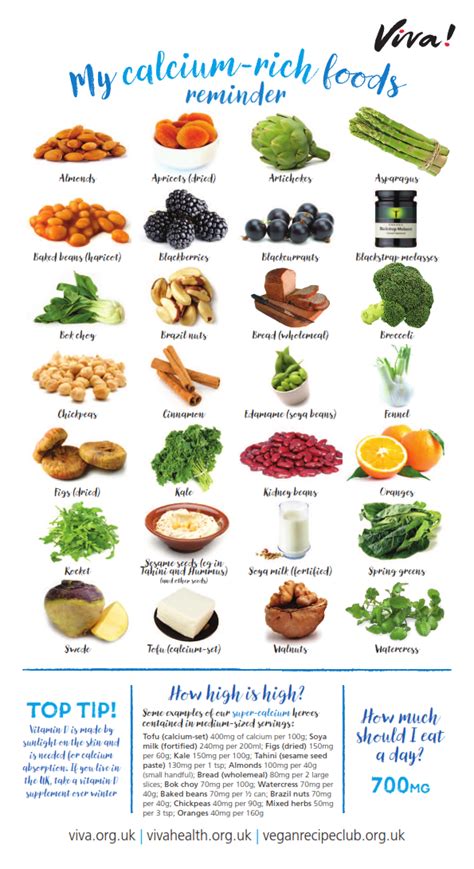Intro
Boost your bone health with the dynamic duo of calcium and vitamin D. Discover the 7 ways these essential nutrients work together to strengthen bones, prevent osteoporosis, and reduce fracture risk. Learn how to optimize your calcium and vitamin D intake for a stronger, healthier you, and say goodbye to brittle bones and hello to a vibrant life.
Maintaining strong and healthy bones is essential for our overall well-being, and two nutrients play a crucial role in achieving this goal: calcium and vitamin D. These two nutrients work together to support bone health, and their importance cannot be overstated. In this article, we will delve into the seven ways calcium and vitamin D boost bone health, exploring the benefits, working mechanisms, and practical tips for incorporating these nutrients into your diet.

The Importance of Calcium and Vitamin D
Calcium and vitamin D are two of the most critical nutrients for bone health. Calcium is the most abundant mineral in the human body, with approximately 99% of it stored in bones and teeth. Vitamin D, on the other hand, plays a vital role in maintaining calcium levels in the body. When vitamin D is present, the body can absorb calcium more effectively, which is essential for building and maintaining strong bones.
1. Promoting Bone Density
One of the primary ways calcium and vitamin D boost bone health is by promoting bone density. Bone density refers to the amount of minerals, such as calcium, in your bones. When bone density is high, bones are stronger and less prone to fractures. Calcium and vitamin D work together to increase bone density, reducing the risk of osteoporosis and fractures.
2. Supporting Bone Growth and Development
Calcium and vitamin D are essential for bone growth and development, particularly during childhood and adolescence. These nutrients support the formation of new bone tissue, ensuring that bones grow strong and healthy. This is especially important for children and teenagers, as adequate calcium and vitamin D intake can help prevent conditions such as rickets and osteomalacia.
3. Reducing the Risk of Osteoporosis
Osteoporosis is a condition characterized by brittle and porous bones, making them more susceptible to fractures. Calcium and vitamin D can help reduce the risk of osteoporosis by maintaining bone density and supporting bone health. Studies have shown that individuals with adequate calcium and vitamin D levels are less likely to develop osteoporosis and experience fractures.
4. Supporting Muscle Function
Calcium and vitamin D also play a crucial role in supporting muscle function. Calcium helps regulate muscle contractions and relaxations, while vitamin D supports muscle strength and function. This is particularly important for older adults, as maintaining muscle function can help prevent falls and fractures.
5. Regulating Hormones
Calcium and vitamin D help regulate hormones that support bone health. For example, vitamin D helps regulate parathyroid hormone (PTH), which controls calcium levels in the blood. When PTH is out of balance, it can lead to bone loss and increased risk of fractures.
6. Supporting Immune Function
Calcium and vitamin D also support immune function, which is essential for overall health and well-being. Vitamin D, in particular, has been shown to have immunomodulatory effects, helping to regulate the immune system and prevent infections.
7. Reducing the Risk of Chronic Diseases
Finally, calcium and vitamin D may help reduce the risk of chronic diseases, such as hypertension, diabetes, and certain types of cancer. While the exact mechanisms are not fully understood, research suggests that adequate calcium and vitamin D levels may help regulate blood pressure, insulin sensitivity, and cell growth.

Practical Tips for Boosting Calcium and Vitamin D
Incorporating calcium and vitamin D into your diet is easier than you think. Here are some practical tips to get you started:
- Eat calcium-rich foods: Include calcium-rich foods such as dairy products, leafy greens, and fortified plant-based milk in your diet.
- Take vitamin D supplements: Consider taking vitamin D supplements, especially during winter months when sunlight is scarce.
- Spend time outdoors: Spend time outdoors, and expose your skin to sunlight to boost vitamin D production.
- Choose fortified foods: Choose fortified foods, such as cereals and orange juice, which are rich in calcium and vitamin D.
- Consult with a healthcare professional: Consult with a healthcare professional to determine the best way to boost your calcium and vitamin D levels.

Conclusion
Calcium and vitamin D are two essential nutrients that play a critical role in maintaining strong and healthy bones. By understanding the seven ways calcium and vitamin D boost bone health, you can take practical steps to incorporate these nutrients into your diet and reduce the risk of chronic diseases. Remember to eat calcium-rich foods, take vitamin D supplements, spend time outdoors, and consult with a healthcare professional to determine the best way to boost your calcium and vitamin D levels.
What is the recommended daily intake of calcium and vitamin D?
+The recommended daily intake of calcium is 1,000 mg for adults, while the recommended daily intake of vitamin D is 600-800 IU. However, these values may vary depending on age, sex, and other factors. Consult with a healthcare professional to determine the best intake for your individual needs.
Can I get enough calcium and vitamin D from food alone?
+While it is possible to get some calcium and vitamin D from food alone, it may be challenging to meet the recommended daily intake. Consider consulting with a healthcare professional or registered dietitian to determine the best way to meet your calcium and vitamin D needs.
What are the risks of calcium and vitamin D deficiency?
+Calcium and vitamin D deficiency can increase the risk of osteoporosis, fractures, and other chronic diseases. Additionally, vitamin D deficiency has been linked to an increased risk of autoimmune diseases, certain types of cancer, and cardiovascular disease.
We hope you found this article informative and helpful. Share your thoughts and questions in the comments below, and don't forget to share this article with your friends and family to help them boost their bone health!
